How to Choose Olive Oil
Olive oil is a cooking oil that is made by pressing fresh olives. It has a dark green or golden hue and a buttery taste with pepper undertones. Most of the world’s olive oil comes from Italy, Greece, and Spain, which is not surprising as it is one of the main cooking ingredients in Mediterranean cuisine.
5-Minute Crafts prepared a guide for you consisting of 5 simple steps. It will help you choose olive oil of good quality.
1. Choose the olive oil type.
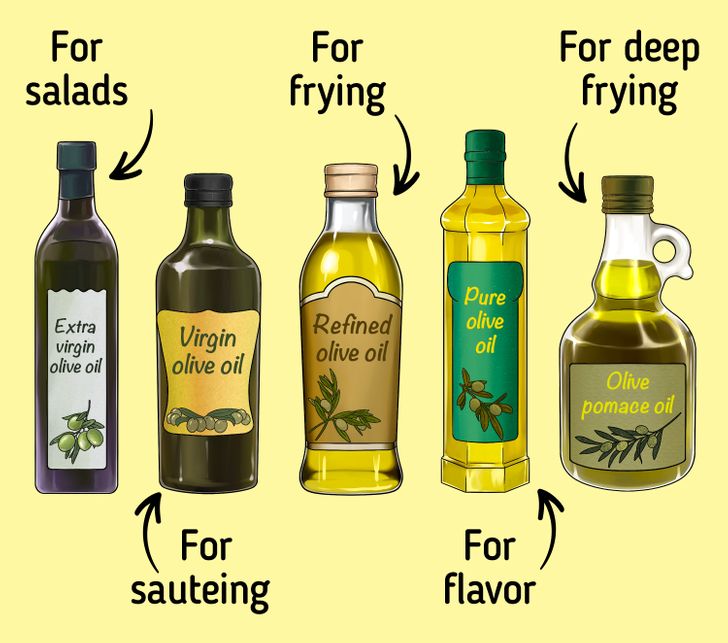
Typically, there are 5 varieties of olive oil:
- Extra virgin olive oil is an unrefined oil that is extracted from olives by the cold-pressing method. It has low acidity and is considered the best because it retains most of its natural taste and aroma. Extra virgin olive oil is great for dressing salads, but it shouldn’t be used for cooking due to its low smoke point.
- Virgin olive oil is an unrefined oil that is extracted from olives by the cold-pressing method. Its acidity is slightly higher than that of extra virgin olive oil, but the taste is softer. This olive oil is resistant to high temperatures and is suitable for low-heat cooking (sautéing and baking). It can also be used as a salad dressing.
- Refined olive oil is obtained by thermal processing of virgin olive oils. It’s considered low quality and is only suitable for cooking, especially at high temperatures. It’s usually used for frying.
- Pure olive oil is a blend of refined and unrefined oils. Just like refined olive oil, it’s only suitable for cooking and also for making flavored oils with herbs.
- Olive pomace oil is an olive oil of the lowest quality, which is extracted from the pomace that remains after the olives are pressed. It’s suitable only for high-heat cooking, like, for example, deep-frying.
2. Assess the packaging.
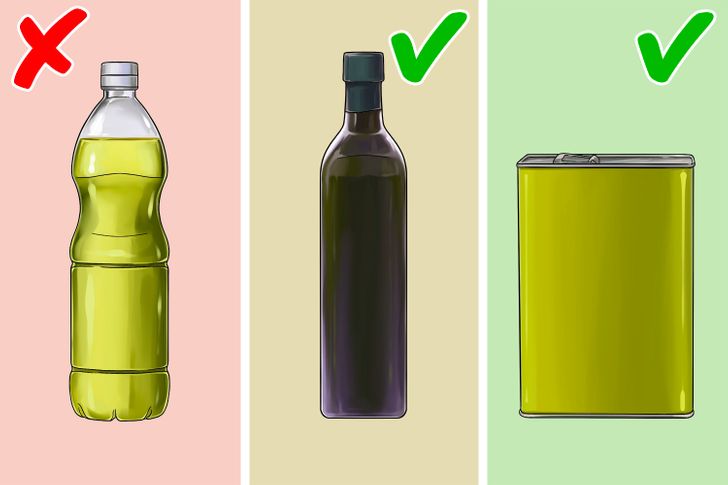
Heat, light, and air are the main factors that can affect the quality of unrefined olive oil. Excessive exposure to any of these things will quickly destroy an oil’s flavor. If you choose virgin or extra virgin olive oil, take the one that comes in a dark glass bottle or can. On the other hand, avoid products that are sold in a clear container, especially a plastic one.
At home, store the oil in a sealed container and in a cupboard, away from the stove. Once opened, it should be consumed within 2 to 3 months.
3. Check the harvest and best-by dates.
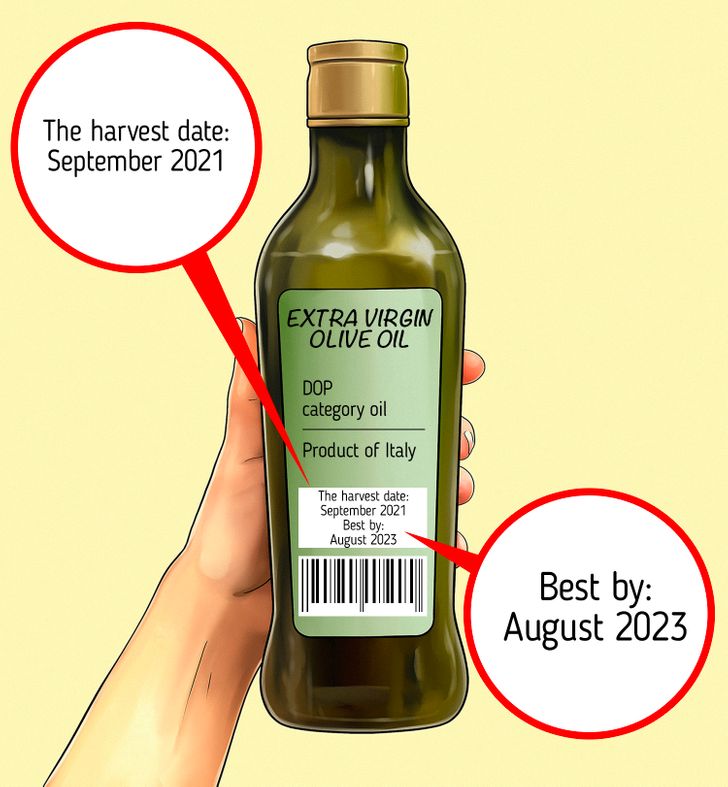
Look at 2 dates on the label of a bottle or can:
- The harvest date: It says how fresh the olive oil is, meaning when the olives were harvested for pressing. Remember that olive oil doesn’t improve with age, so make sure you don’t buy oil older than 2 years. It’s best to take oil that is made from the current year’s harvest.
- The best-by date: The best-by date must cover the period between the moment of purchase and 2 to 3 months after that. Remember that it’s recommended to use olive oil within this period of time after opening the container.
4. Check out the oil’s origin.
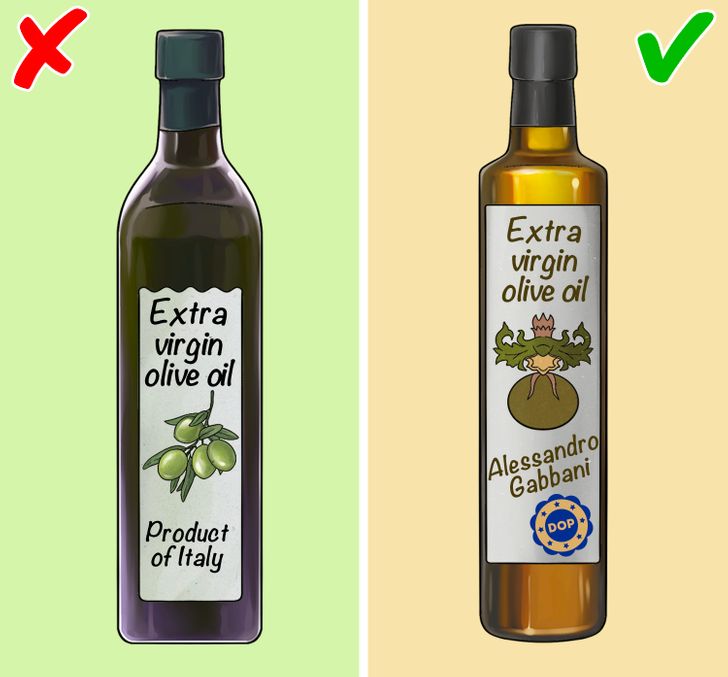
Small producers who grow and press their own olives often indicate the name of their estate on the bottle. Most likely, it will be unfamiliar to you, but it doesn’t matter. The name of the estate itself on the label is a sign of quality.
Pay attention to official marks or seals that show that the oil comes from this region. For example, it can be PDO (Protected Designation of Origin), the official seal of the European Union. It’s placed on products that were produced in a specific geographic area, using the recognized know-how of local producers and ingredients from the region. The acronym may differ in other European languages. For example, the oils from Italy, Spain, or Portugal may have a DOP mark.
On the bottle with oil, you may read that the product belongs to a particular country. For example: “Product of Italy.” This only means that the oil was bottled and exported from that country. And the olives could be grown, harvested, and pressed elsewhere, like in Tunisia, Greece, or Spain. Look for the name of the estate or official markings on the label to find out where the oil was actually produced.
5. Check out the oil’s taste.
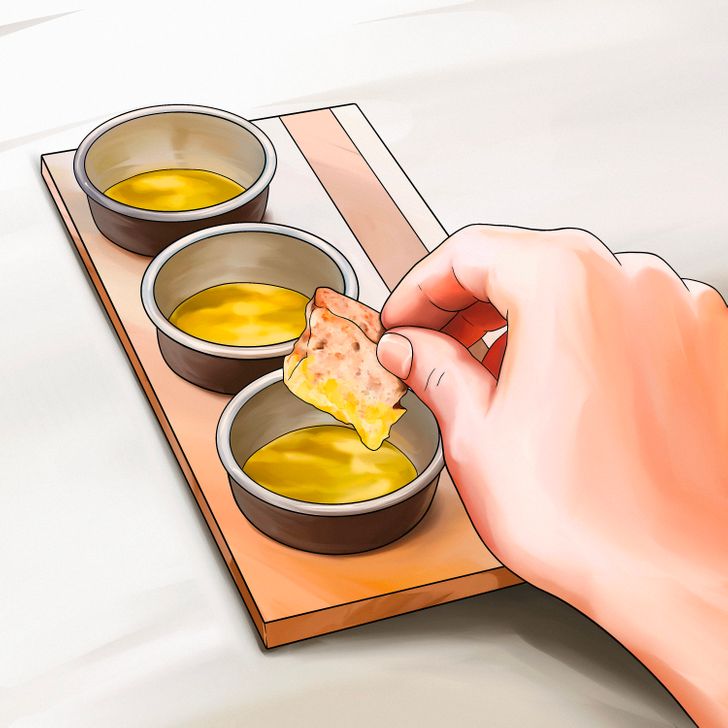
If it’s possible to taste the olive oil before buying it, be sure to do so.
Dip a piece of bread in it. Another way is to pour 1 to 2 tablespoons of oil in a small cup, place the cup on your palm, cover it with your other palm, and heat the oil for 30 seconds. After that, take a sip and look for hints of fruity and herbal notes in the taste. The aftertaste should be bitter with light hints of pepper. Such sensations indicate that this is a high-quality extra virgin olive oil.
However, if the oil smells like lime or leaves an oily waxy film in your mouth, then the oil has gone bad and you shouldn’t buy it.